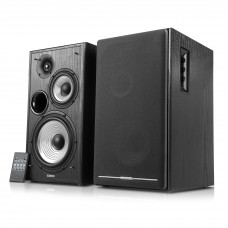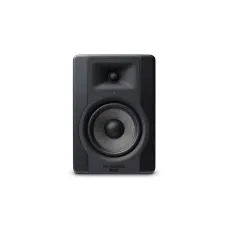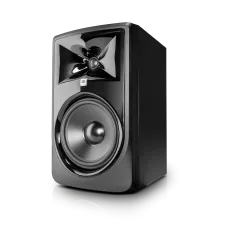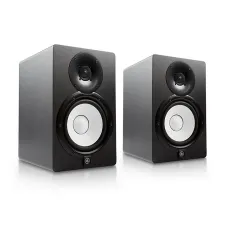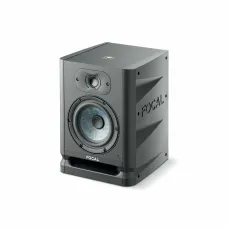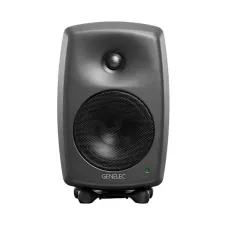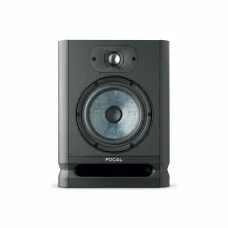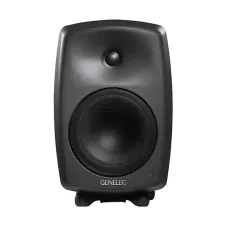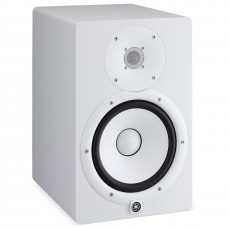High-Quality Studio Monitors available at the Best Price in Bangladesh
Studio Monitor is the professional quality speaker used by Sound specialists. It is one of the most common Studio Equipment used by any Studio. The very first Studio Monitor was the Altec Lansing Duplex 604 in 1944 which was designed by James B. Lansing. The Altec 604 quickly became the industry standard studio monitor in the U.S. Today Studio monitor Speakers are a must-have in any Studio.
Studio Monitor Brands available in BD
In 2025, Anyone looking for a good studio monitor in BD; can easily buy one from Known Brands like JBL, Pioneer, Edifier, PreSonus, Yamaha, M-Audio, etc.
Types of Studio Monitors
When it comes to the Classification of the Studio Monitor there are a few categories available. Although based on design and type Studio monitors are divided into four main types. They are the Nearfield Monitors, the Midfield Studio Monitors, the Fairfield Studio Monitors, and the subwoofers.
Nearfield Studio Monitor
Nearfield Studio Monitors are known for their compact size and affordability. Designed to sit three to five feet from the listening position, these studio speakers use a simple two-way design with a compact four to eight-inch driver. Because of the proximity and low volume, nearfield monitors help minimize the acoustics impact in any untreated environment. Nearfield speakers are also used for referencing a mix on smaller speakers via sitting on the meter bridge of a large format console.
Midfield Studio Monitor
Midfield Studio Monitors are designed to sit 5 to 10 feet from the listening position, midfield monitors are typically mounted on monitor stands behind a console or workstation. These speakers typically use a three-way design with an 8 to 10-inch bass driver for balanced frequency response at moderate playback levels. Their size lets them be placed far from the listening position without losing bass or detail. At low levels, they minimize the impact of the acoustic environment.
Fairfield Studio Monitor
Fairfield Studio Monitors are the largest design of studio speakers available. They are also called mains. Usually placed about 10 feet from the listening position, far-field monitor speakers are capable of delivering the widest frequency response. However, they are heavily impacted by the acoustics of the heavily treated, purpose-designed control rooms. They can withstand punishingly loud playback levels. Fairfield Studio Monitors usually have a three-way design. Although many models are available in various designs ranging from 2 way up to 4.5-way designs or even higher. The bass and mid drivers on these monitors tend to range from 10 to 18-inches and more.
Subwoofer Monitors
Subwoofer Monitors are designed to extend the low-frequency response of smaller midfield or nearfield monitors. Although, subwoofers require high output levels to perform accurately and feature a single driver ranging from 12 to 24-inches.
Factors to Consider Before Buying a Studio Monitor
So when someone is considering getting a studio monitor, certain factors determine which Studio monitor speaker will be the best suitable. These factors are:
Active or Passive monitors
Passive monitoring systems are modular, requiring an appropriate amplifier and crossover. Active monitors have all of that inbuilt. It is possible to create a world-class passive monitoring system; although countless professional studios worldwide use active studio monitors.
Input Power
For a Studio monitor speaker, the power has a big effect on the overall sound. It also determines the dynamic range and the amount of headroom before signals peak. So, Higher wattage means it will let anyone hear more transient detail, and make precise adjustments to compressors, limiters, and gates.
Single-amp, Bi-amp, and Tri-amp Signal
How the input signal is divided depends on the power in the drivers will determine whether it’s a single-amp, bi-amp, or tri-amp configuration. In a single-amp configuration, the crossover network divides the output of one amplifier and sends low frequencies to the woofer and high frequencies to the tweeter. In a bi-amp configuration, the crossover network utilizes two separate amplifiers; each is used to power the high- and low-frequency drivers. A studio monitor that divides the signal in three ways to feed three amplifiers that drive each high-, mid-, and low-frequency speaker individually is a tri-amp configuration.
Frequency range
The frequency range of a studio monitor indicates if it can handle the full frequency range of any recordings. Most monitor specs list the lowest frequency they handle in Hz (hertz) and the highest frequency in kHz (kilohertz). For most recording work a frequency response of 50Hz-20kHz is the standard limit for frequency range.
Total harmonic distortion (THD)
Total harmonic distortion or THD is another indicator of general accuracy. THD lets the user know how cleanly a monitor can reproduce whatever audio it’s fed.
Driver materials
Driver Materials play a big part in the sound of a studio monitor speaker. But this also affects the application-specific benefits. Manufacturers use different materials like Silk, mylar, glass, carbon, titanium, and metal alloys to construct their drivers and tweeters.
Cabinet
A well-designed studio monitor cabinet is crucial for maximum performance. The cabinet is designed around the driver to be non-resonant with the output.
Studio Monitor Volume Controllers
A studio monitor must be compatible with most Studio Monitor Volume Controllers available.
Buy From the best Studio Monitor Shop Star Tech
Star Tech is the biggest Computer, laptop, and computing component retail and Online shop in Bangladesh. Visit any nearby Star Tech shop to buy a Studio Monitor and all kinds of studio equipment at the lowest price. We have branches in Dhaka, Chittagong, Rangpur, Gazipur, and Khulna. You can also order a Studio Monitor online from the official E-commerce website. Our delivery has all the districts in Bangladesh covered. We also have extensive After-sales support.

